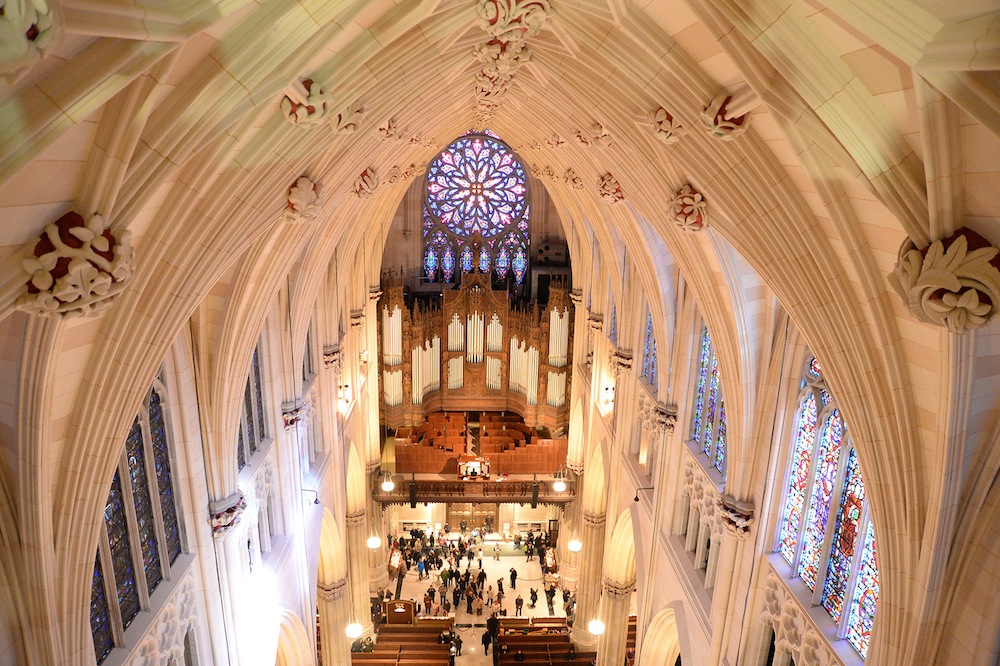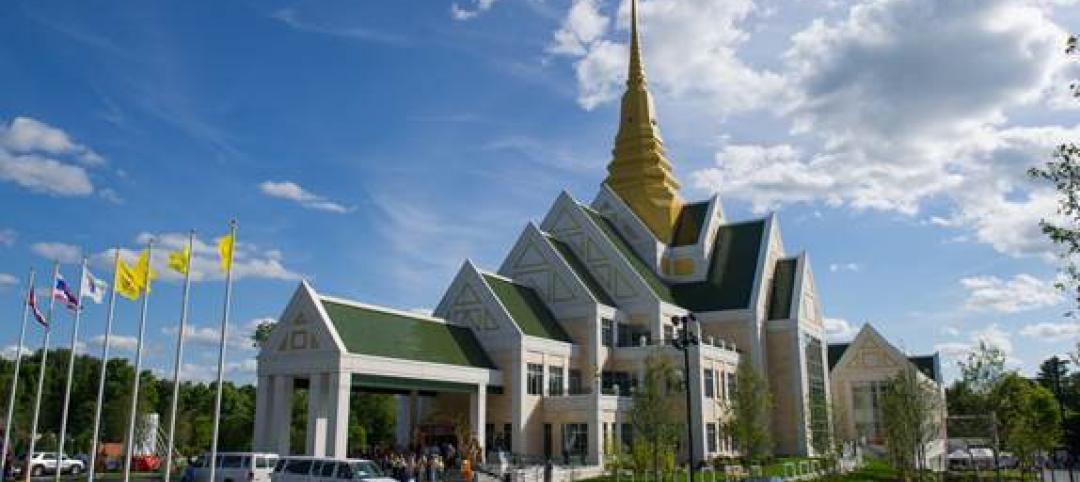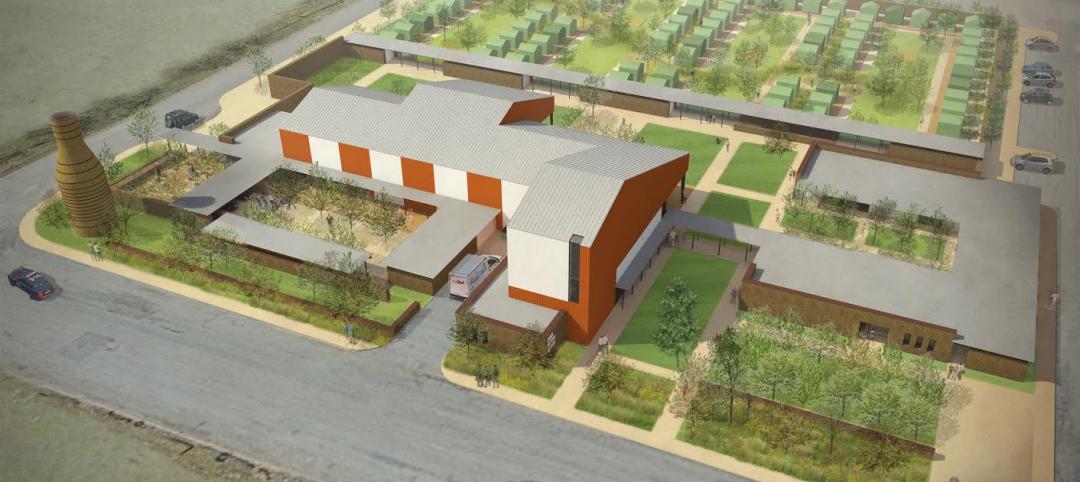Pope Francis is scheduled to visit New York City next month, and one of his stops will be the Cathedral of St. Patrick, where the Pontiff will lead an evening prayer service called Vespers on September 24.
Just in time for the Holy Father’s arrival, the neo-Gothic Roman Catholic Church and landmark in Manhattan will have completed a $177 million restoration, whose planning and reconstruction took nearly nine years. The complexity of this project required an unusually diverse array of consultants, from the Metropolitan Museum of Art to the New York Fire Department.
St. Patrick’s, which opened in 1888, had fallen into serious disrepair when, in 2006, Cardinal Edward Egan called for the building’s first major overhaul in 70 years. Murphy Burnham & Buttrick Architects developed a master plan that would allow the cathedral to stay open during the restoration.
A complex scaffolding system on a rolling platform moved down the cathedral’s interior nave in phases. That movement was coordinated, when possible, with exterior scaffolding to access stained glass windows from both sides and allow the Design team to review surfaces while the church was in use.
Autodesk’s BIM360 Field software managed this project, whose construction work got started in 2012 and included the tracking of more than 30,000 preservation treatments and repairs. This software also allows changes to the project’s scope to be communicated instantly to the Building Team.
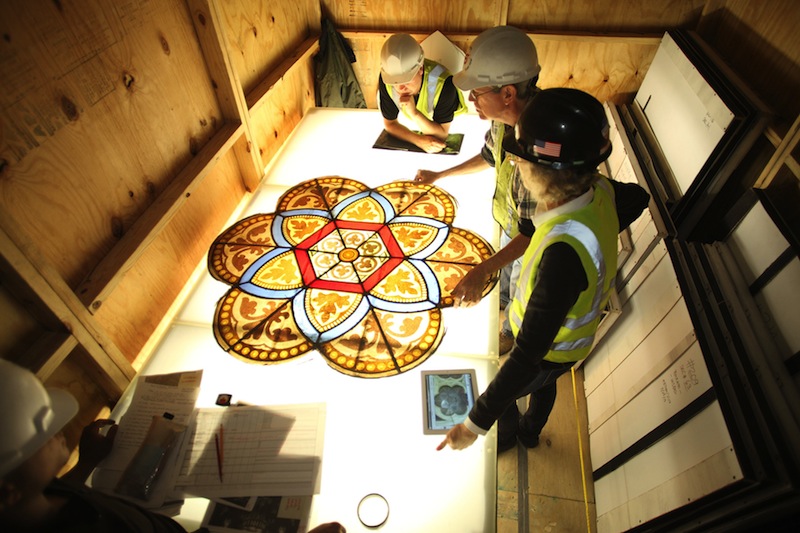
Every square inch of the exterior was cleaned and repaired, including the twin spires that rise 330 feet about street level. On the exterior, stone was cleaned using the Rotec system, a micro-abrasive technology of low-pressure water, air, and crushed glass. Copper stains were removed with a clay poultice that draws impurities from the stone. On the interior, the team used multiple applications of Arte Mundit, a chemical cleaning latex peel.
Seventy-five stained glass windows with 3,700 panels were cleaned and repaired, too. The team installed new transparent protective glazing with laminated UV filtering, which let in more light and mitigated heat.
Because there was no system for putting out a fire in the attic above the nave except for a single standpipe, it was clear that a blaze in the attic would be too dangerous for firefighters to extinguish. So the team installed a high-pressure mist system as an alternative to a conventional sprinkler system. The system uses nitrogen to propel a small fraction of the water a conventional sprinkler system uses, suppressing a fire in minutes.
All new MEP and electrical systems are installed, including a geothermal system that required drilling 10 wells of up to 2,200 feet deep into the bedrock along the north and south sides of the Cathedral, a feat considering the network of subways, plumbing, and infrastructure underground. The geothermal system is expected to provide a 30% energy savings and reduce greenhouse gas emissions by 94,000 kilograms annually.
The Building Team included Building Conservation Associates (Restoration Consultant), Landmark Facilities Group (MEP Engineer), Silman Associates (Structural Engineer), Langan (Geotechnical Engineer), Robin Key (Landscape Architecture), Jaffe Holden Acoustics, Aramark, Arup Fire, Barkley Studio, Cerami & Associates, William Dailey Code Consulting, Construction Specifications, Inc., Ducibella Venter & Santore, Eckersley O’Callaghan & Partners, Femenella & Associates, Fisher Marantz Stone, Mary Kay Judy, GB Geotechnics, Heintges & Associates, Northeast Energy Services, PW Grosser Consulting, Slocum Cost Consulting, and VDA Associates.
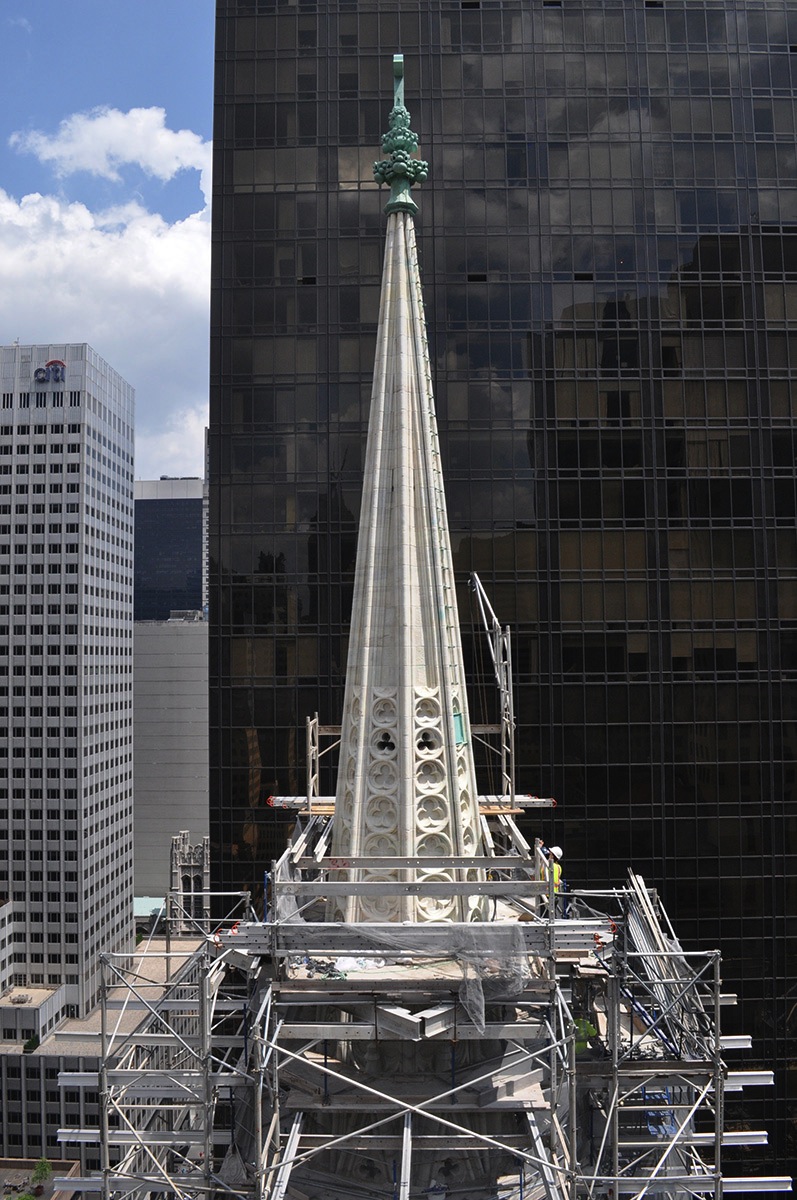
Related Stories
| Jun 17, 2014
Nation's largest Thai Buddhist temple opens near Boston
The $60 million facility built in honor of King Rama IX of Thailand is the largest Thai Buddhist temple outside of Thailand.
| Jun 12, 2014
Austrian university develops 'inflatable' concrete dome method
Constructing a concrete dome is a costly process, but this may change soon. A team from the Vienna University of Technology has developed a method that allows concrete domes to form with the use of air and steel cables instead of expensive, timber supporting structures.
| Jun 10, 2014
Gaudi’s famed cathedral on ice: Dutch students to construct 132-foot ice replica of Sagrada Familia
"Sagrada Familia in Ice" will be built with a mixture of wooden fibers and plain ice that is three times stronger than ice.
| May 29, 2014
7 cost-effective ways to make U.S. infrastructure more resilient
Moving critical elements to higher ground and designing for longer lifespans are just some of the ways cities and governments can make infrastructure more resilient to natural disasters and climate change, writes Richard Cavallaro, President of Skanska USA Civil.
| May 20, 2014
Kinetic Architecture: New book explores innovations in active façades
The book, co-authored by Arup's Russell Fortmeyer, illustrates the various ways architects, consultants, and engineers approach energy and comfort by manipulating air, water, and light through the layers of passive and active building envelope systems.
| May 19, 2014
What can architects learn from nature’s 3.8 billion years of experience?
In a new report, HOK and Biomimicry 3.8 partnered to study how lessons from the temperate broadleaf forest biome, which houses many of the world’s largest population centers, can inform the design of the built environment.
| May 13, 2014
19 industry groups team to promote resilient planning and building materials
The industry associations, with more than 700,000 members generating almost $1 trillion in GDP, have issued a joint statement on resilience, pushing design and building solutions for disaster mitigation.
| May 12, 2014
Lubbock, Texas, to build modern 'tent city' as shelter for homeless
On the five-acre site of a former cotton gin, the High Cotton program provides temporary shelter for Lubbock's homeless population. The facility needs to expand due to increased need, and new plans have been drawn up.
| May 11, 2014
Final call for entries: 2014 Giants 300 survey
BD+C's 2014 Giants 300 survey forms are due Wednesday, May 21. Survey results will be published in our July 2014 issue. The annual Giants 300 Report ranks the top AEC firms in commercial construction, by revenue.
| Apr 29, 2014
USGBC launches real-time green building data dashboard
The online data visualization resource highlights green building data for each state and Washington, D.C.


